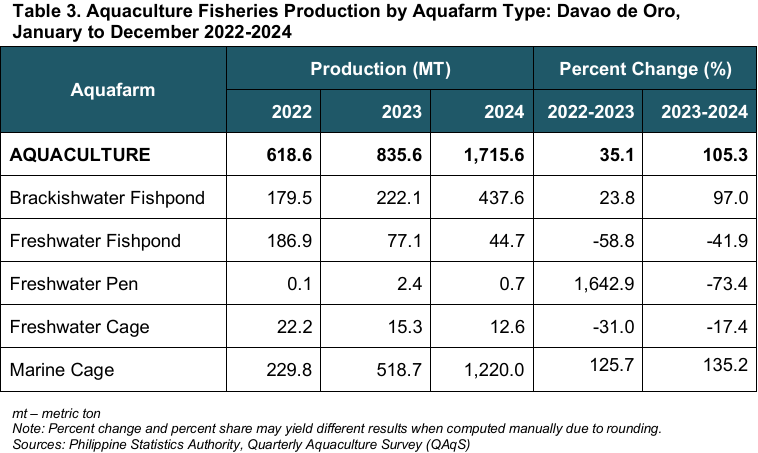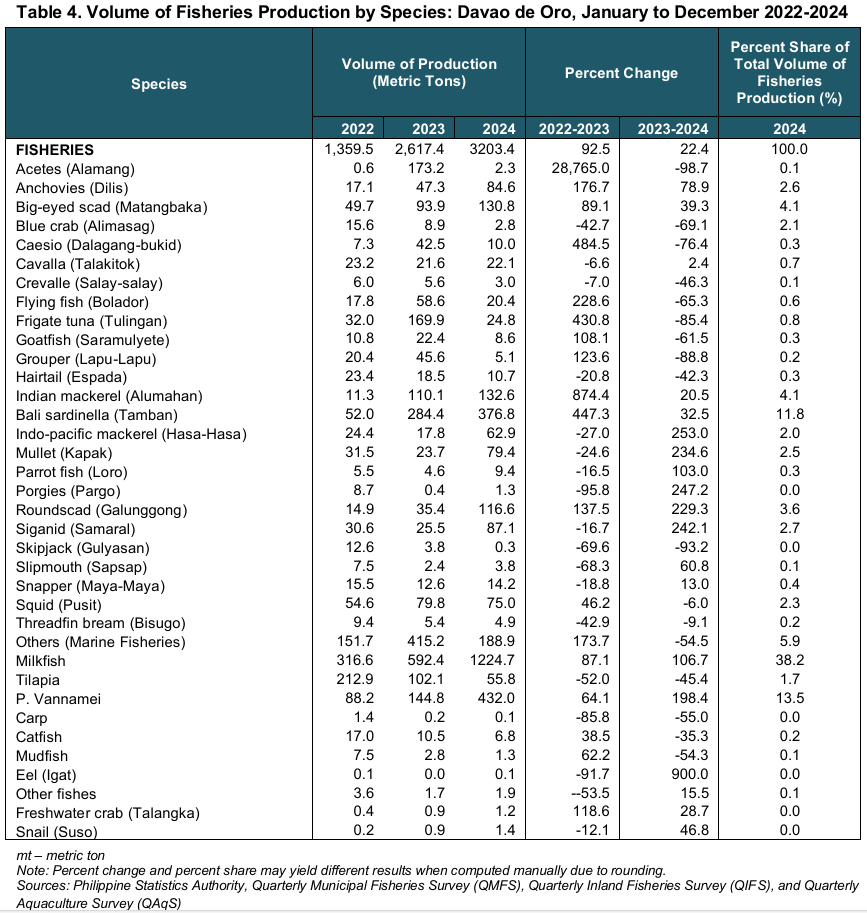Total volume of fisheries production records a 22.4 percent increase
In 2024, fisheries production in Davao de Oro totaled 3,203.4 metric tons, marking a 22.4 percent increase from 2,617.4 metric tons in the previous year. The growth was mainly driven by the aquaculture subsector, while both marine municipal and inland municipal fisheries recorded annual declines in production. (Figure 1 and Table 1)
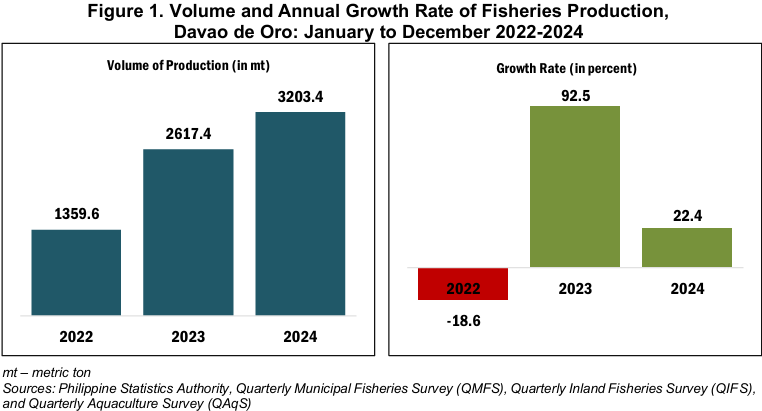
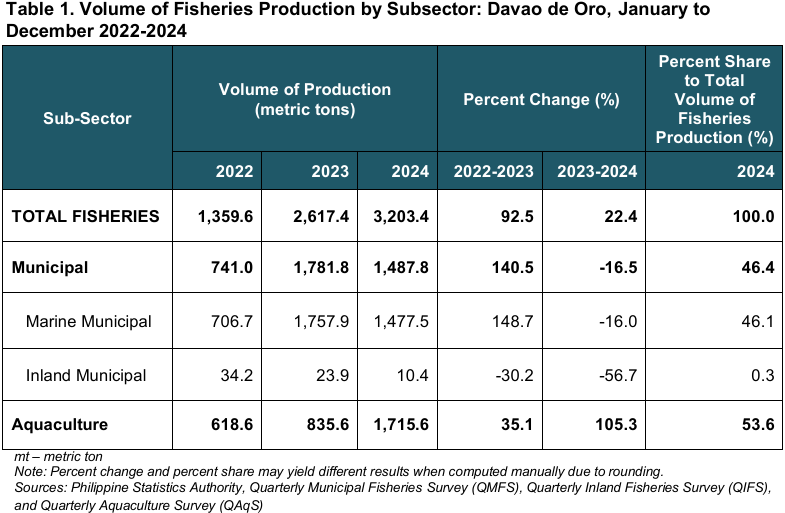
Fish production in Davao de Oro comes from three subsectors: marine municipal, inland municipal, and aquaculture. Commercial fisheries are not applicable, as the province has no commercial fishing operations. Aquaculture led fisheries production in Davao de Oro in 2024, contributing 53.6 percent of the total volume. The remaining 46.4 percent came from municipal fisheries, with 46.1 percent from marine municipal fishing and 0.3 percent from inland fishing. (Figure 2 and Table 1)
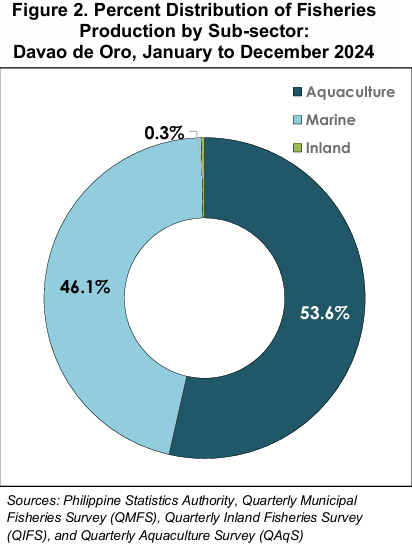
Marine municipal fisheries production declines by 16.0 percent
In 2024, marine municipal fisheries in Davao de Oro produced 1,477.5 metric tons, representing a 16.0 percent decrease from the 1,757.9 metric tons recorded in the previous year. Despite the decline, this subsector still contributed a significant 46.1 percent to the province’s total fisheries production. (Figure 3 and Table 1)
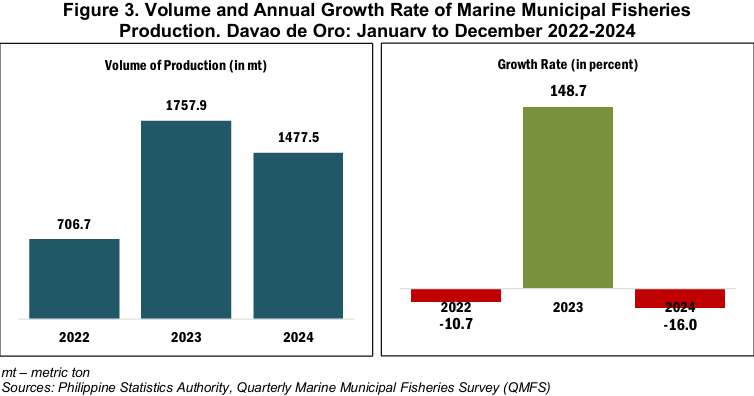
Bali Sardinella remains the top species in marine municipal fisheries
The top three species caught in marine municipal fishing in Davao de Oro, based on the highest volume, were Bali Sardinella, Indian Mackerel, and Big-eyed Scad. Bali Sardinella led with 376.8 metric tons, followed by Indian Mackerel at 132.6 metric tons and Big-eyed Scad at 130.8 metric tons. (Table 2)

Inland municipal fisheries production reduces by 56.7 percent
Inland municipal fisheries production dropped to 10.4 metric tons during the year, reflecting a 56.7 percent decrease from 23.9 metric tons in the previous year. This subsector accounted for 0.3 percent of the total fisheries production during the period. (Figure 4 and Table 1)
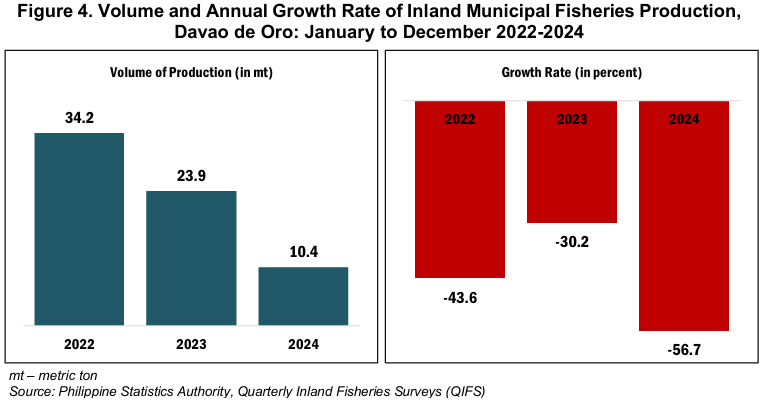
Aquaculture production increases at 105.3 percent
Aquaculture production in Davao de Oro was estimated at 1,715.6 metric tons during the year, showing a remarkable 105.3 percent increase from 835.6 metric tons in 2023. This growth underscores the expanding role of aquaculture in the fisheries sector, contributing 53.6 percent to the total fisheries production. (Figure 5 and Table 1)
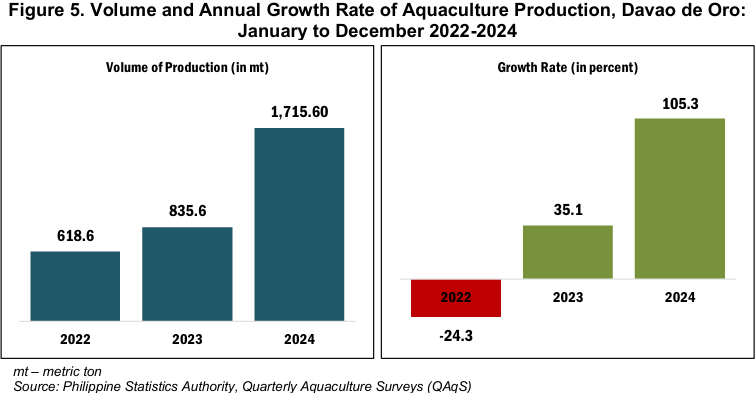
Among the aquaculture subsectors, only brackishwater fishponds and marine cages recorded positive growth compared to the previous year. Production from brackishwater fishponds nearly doubled, rising by 97.5 percent from 222.1 metric tons to 437.6 metric tons. Marine cage production showed an even greater increase, surging by 135.2 percent from 518.7 metric tons in 2023 to 1,220.0 metric tons in 2024. These substantial gains highlight the growing importance of these subsectors in the overall aquaculture output. (Figure 6 and Table 3)
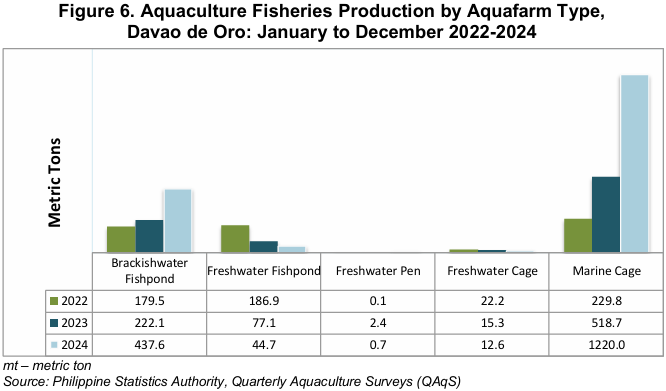
In contrast, the rest of the aquaculture subsectors registered declines in production. Freshwater fishpond output decreased by 41.9%, freshwater pens saw a sharp drop of 73.4%, and freshwater cage production fell by 17.4%, signaling a downturn in these aquaculture activities. (Figure 6 and Table 3)
